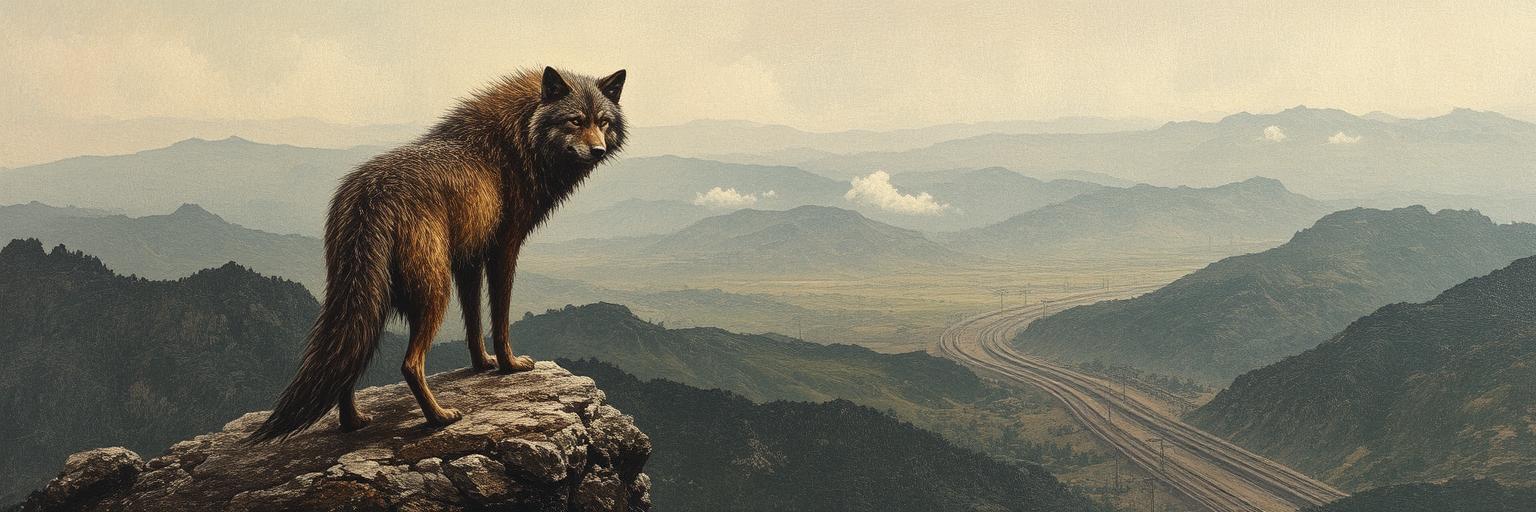The Birth of the First High Fang
Things were different before Broken Tail Magnus. We were divided and restless. Now we are one Alliance.
Old stories tell of a time before the packs were united and werewolves fought their brothers to the death for power. It is a time so far gone now that young werewolves scarcely believe it is possible that the old ones fought to the death for power and territory. Few speak of Broken Tail Magnus, but when the storytellers bring out those stories around the fire, the young ones lean forward, eyes wide as saucers. For a few weeks following, when the whelps play, each of them wants to be Broken Tail Magnus, the first High Fang.
The Past
There was a time when werewolves had no unity outside their packs, and even packs fought for power and leadership. Alpha status, instead of being passed from father to son, was a competition among the male wolves of the pack, fighting one another to see who was the strongest, and leaving many wolves dead or severely wounded.
Wolf populations dropped, and entire packs became extinct. Wolves Withered, and Hollows became more common among their numbers. External threats increased while internal threats remained the same. Packs were without protection from outside threats and pack members could be eliminated for being a threat to the ranking power within the pack.
By the time of the American Civil War, packs were scattered, small, and dwindling in number. When wolves were called to serve the Union or the Confederacy alongside humans, the threat of extinction quickly became real. Women and youngsters remained home while the kits and ranking officials within the packs were sent to war. Those left at home lived with the uncertainty of whether those they loved -- or those who oppressed them -- would ever come home.
The Birth of Broken Tail Magnus
Perhaps he was just unlucky, or perhaps he was chosen.
Magnus Moonbane was born during a total solar eclipse in 1843. His mother, the Luna of her pack, died during childbirth. Quickly, whispers spread through the pack that he was cursed because he was born on "the day the sun died" and because he was born with a broken, twisted tail. Members of the pack believed that he would spread his curse among them. In the days before hereditary leadership, Magnus's father, the Alpha, cast him out as an ill omen, leaving him in the elements to die naturally on his own.
Years later, he would hear of a wolf with a broken tail roaming the growing rail lines and spreading talk of unity. He dismissed it as a legend, the same as Silas Rootwalker.
Maybe Magnus was lucky. Or maybe he was blessed, rather than cursed. A mysterious she-wolf who happened upon him in the woods found him and took him back to her den, where she raised him as her own. Some believe she was a spirit guide. The more pragmatic belief is that she had been cast out of a pack or that her pack had been destroyed, and thus she wanted to rebuild with her foundling infant.
She nursed Magnus until he was old enough to fend for himself, and then nothing more is known about her.
When Magnus first shifted, his broken tail became his greatest strength. It was flexible and he learned to use it as a club during combat, making him a strong fighter for an otherwise peaceful wolf.
The Legend
Magnus is known to have traveled back and forth across the North American continent, looking for wolves who had been displaced or harmed by what he termed "the great werewolf war" or by the Human Civil War. When he found them, he insisted they join him (but he never forced them), and as he accumulated enough wolves, they voted for their Alpha and secured a safe territory far from human interference.
In this way, the eight North American werewolf territories were formed. As the packs grew, they became family clans, and as Magnus traveled, he encouraged both communication and alliances between the different territories. More than that, wherever he went, it seemed a new railroad sprang up or new branches formed, each of these railroads connecting the werewolf territories and becoming a communication network that would last for a century or more.
The Foundling Packs
Later, when Magnus had formed the territories and spread the rail lines, he used the rail network to do one final thing before he vanished from memory. He established that each territory must have at least one pack devoted to taking in abandoned whelps, pups, cubs, kits, and veterans returning from any war -- werewolf or human. He knew what it was like to be abandoned, helpless, and hopeless, and he hoped that by creating these packs, the youngsters would find new family.
How His Memory is Preserved
If werewolves had saints, Magnus would be the patron saint of foundlings. His name is invoked for protection, both while they are wildlings and once they are found and brought into the fold.
In memory of Broken Tail Magnus, disabled werewolves are considered a blessing and are treated with special care and kindness, often given honorary positions within the pack even if they are not able to serve.
Leaders are reminded that strength comes from understanding suffering, and in many clans, leadership rituals involve the infliction of pain in order to remind the leader that one must always have an understanding of those who suffer or are lost.



Comments